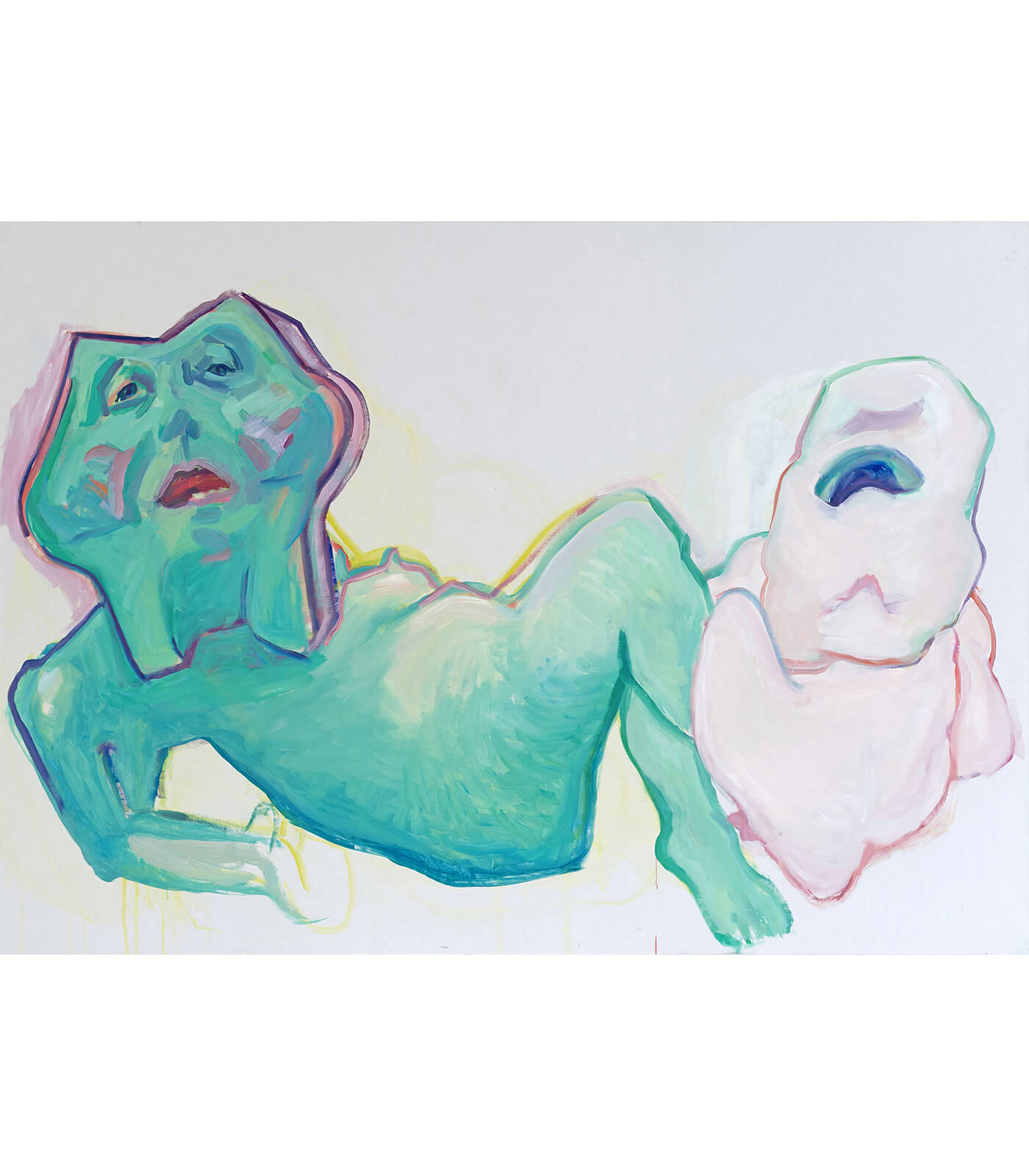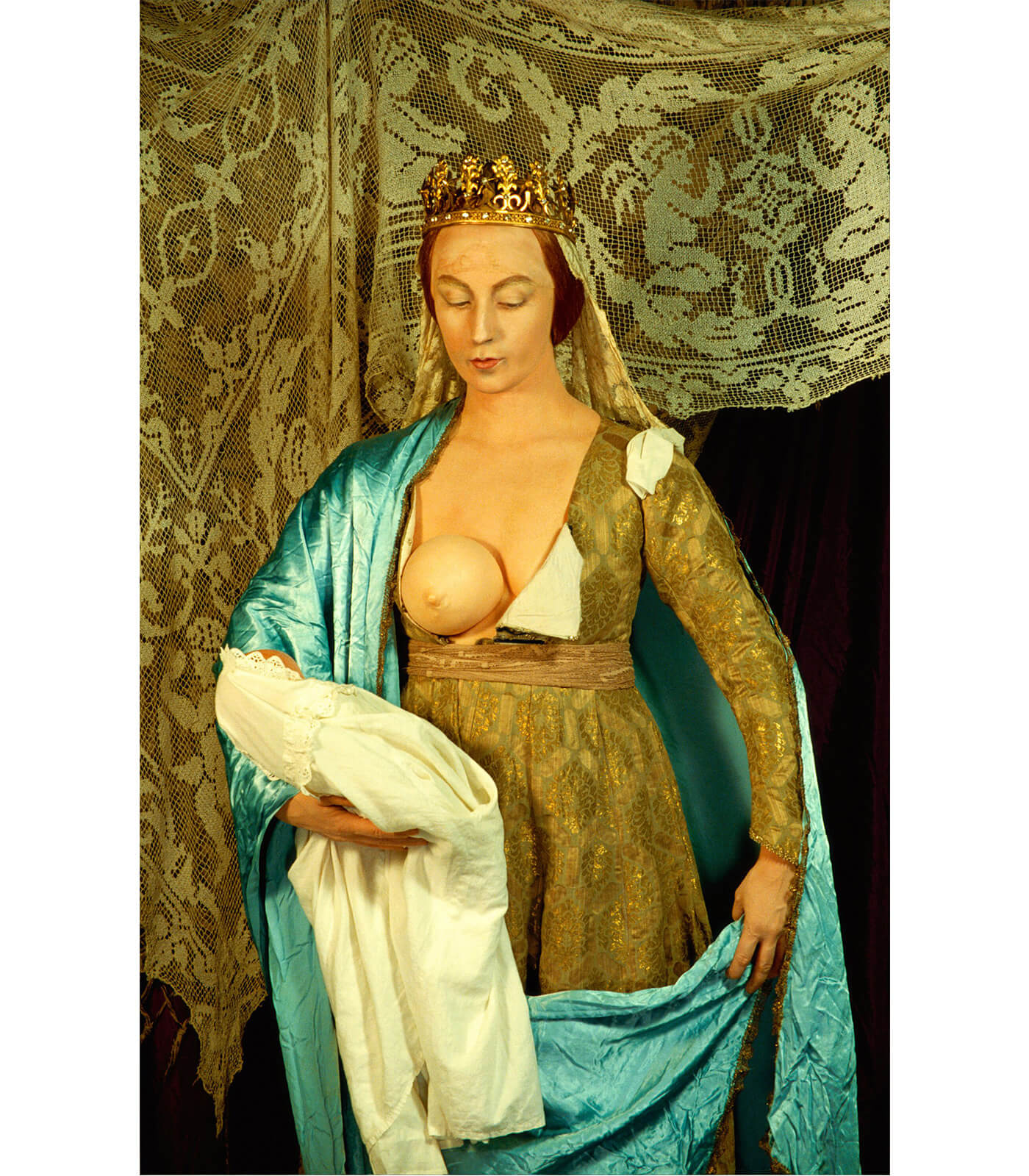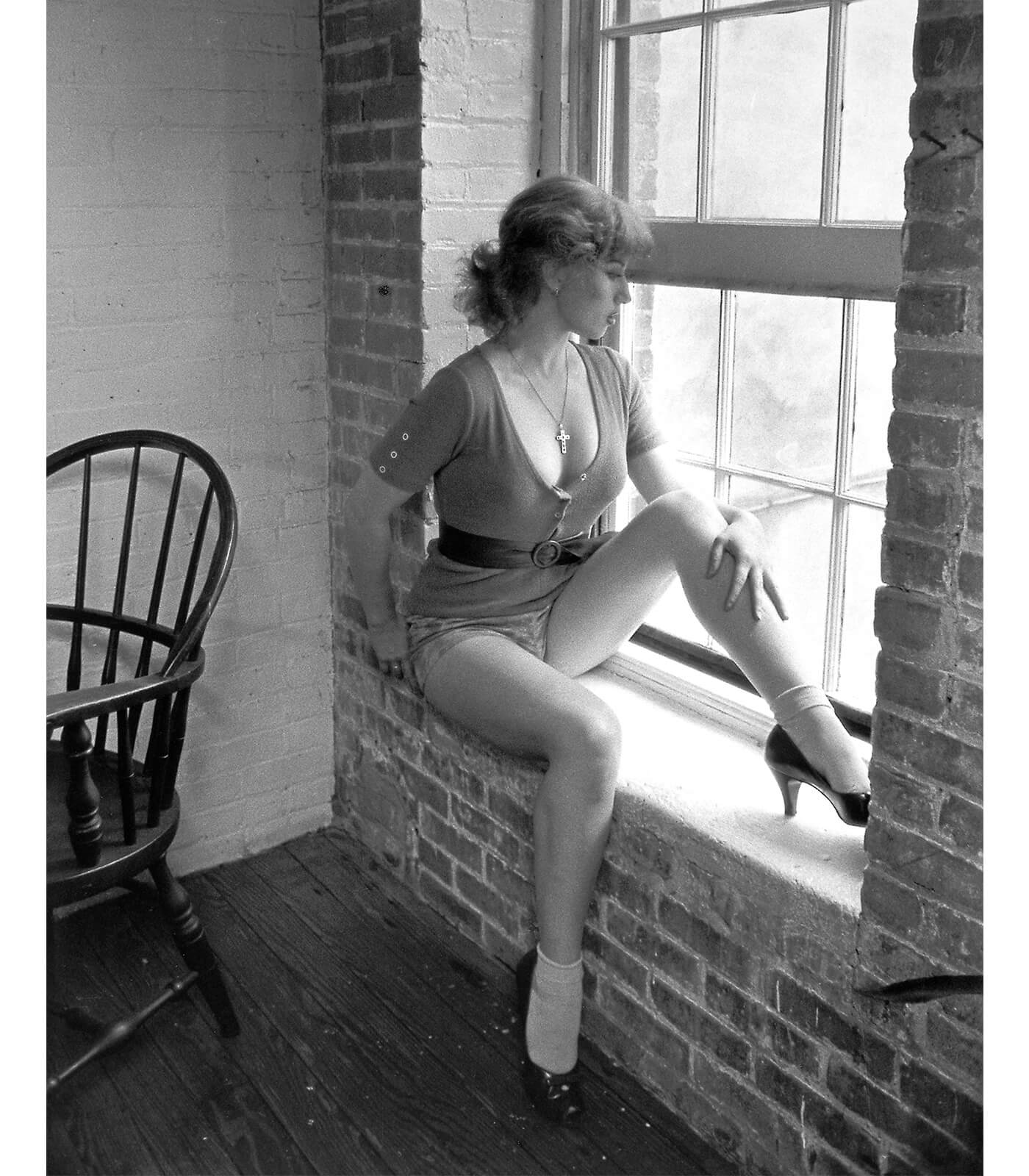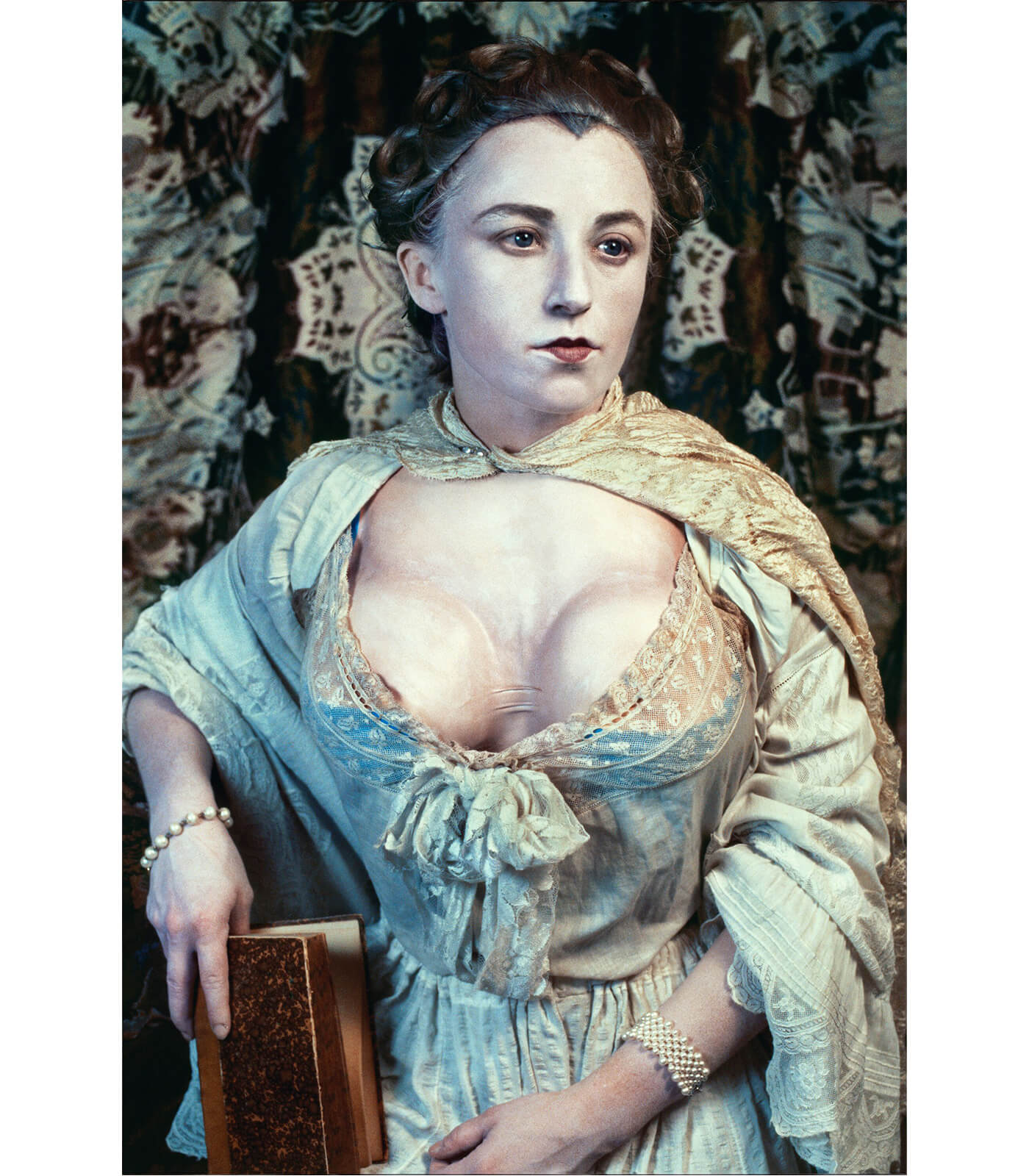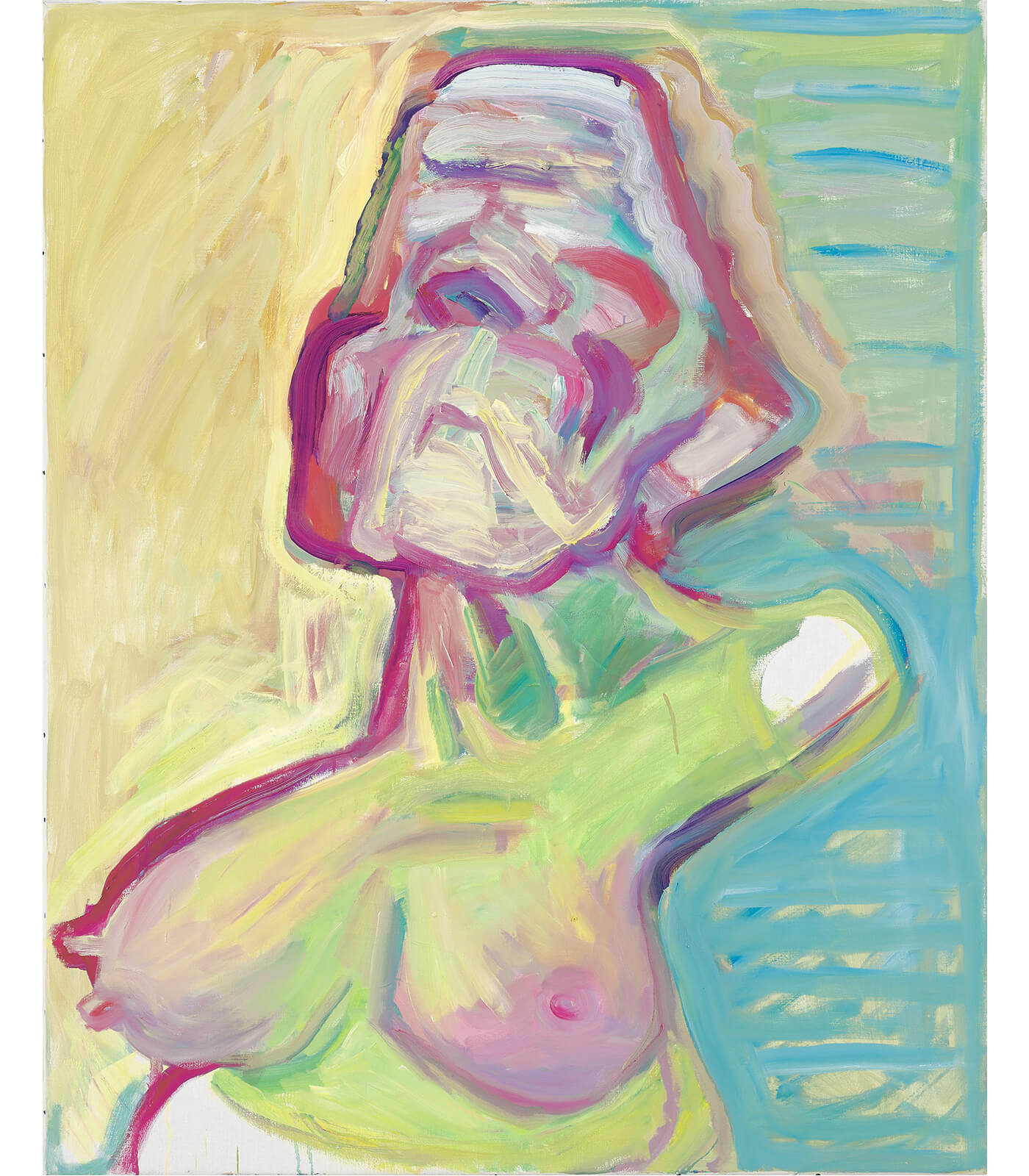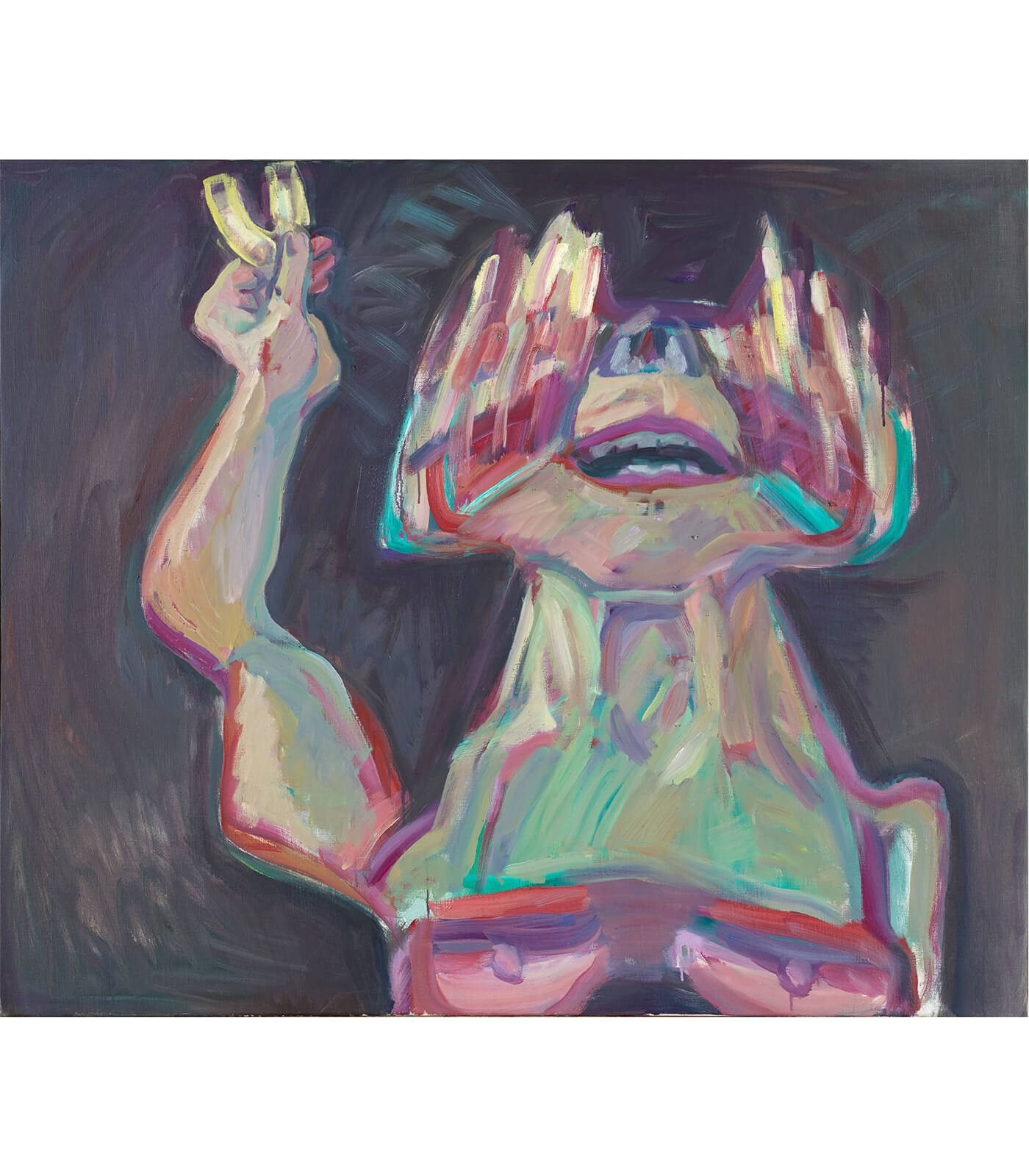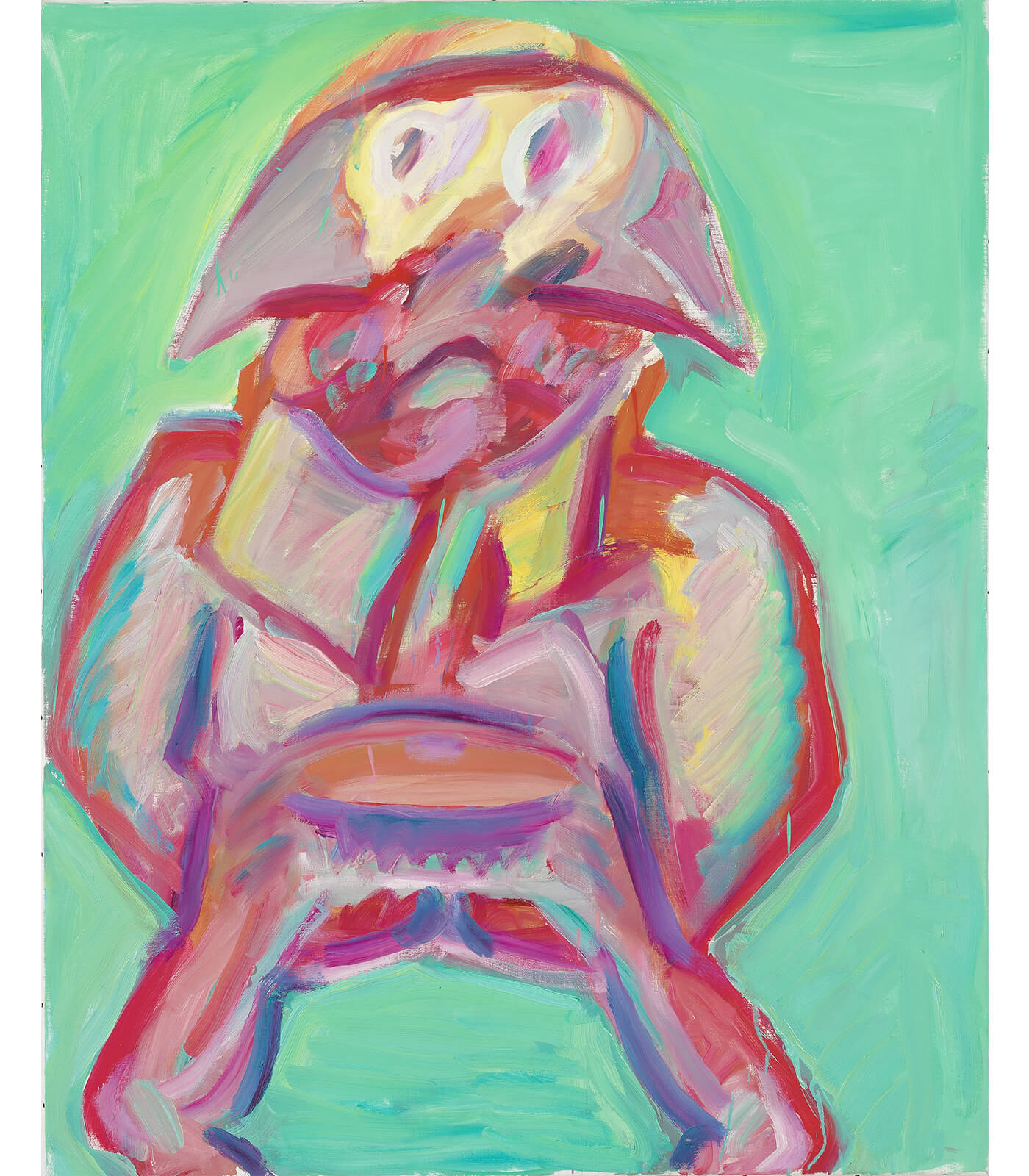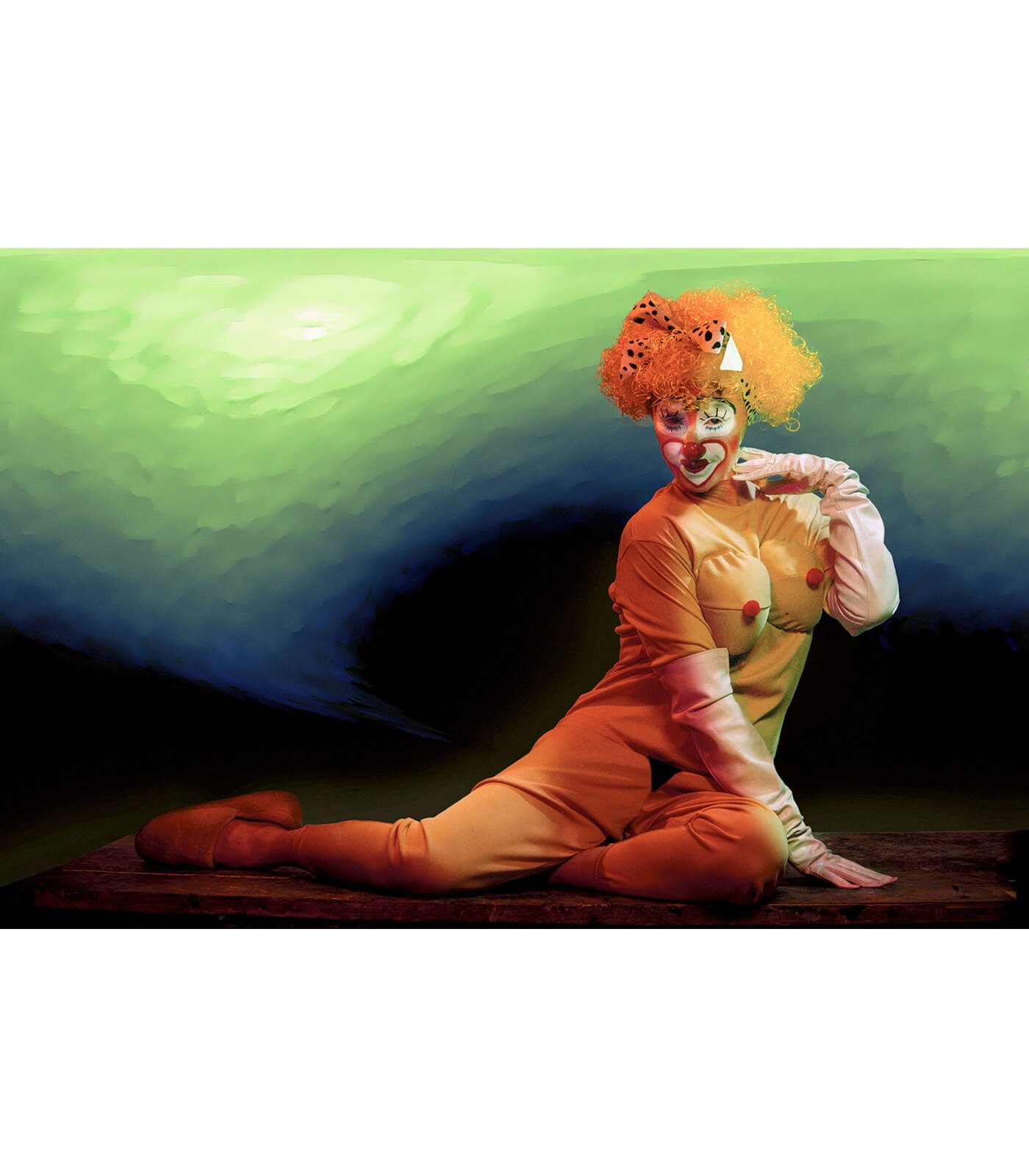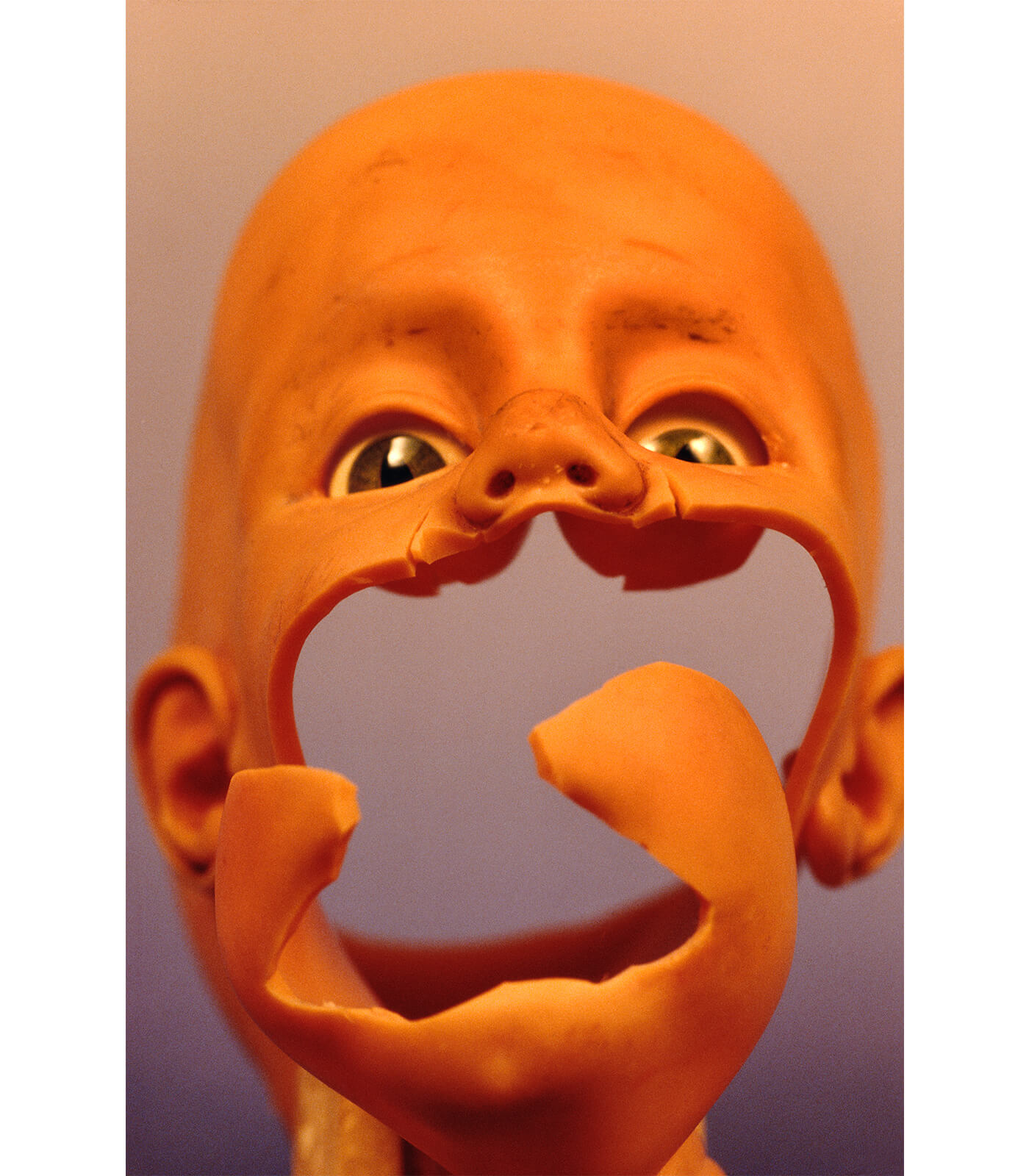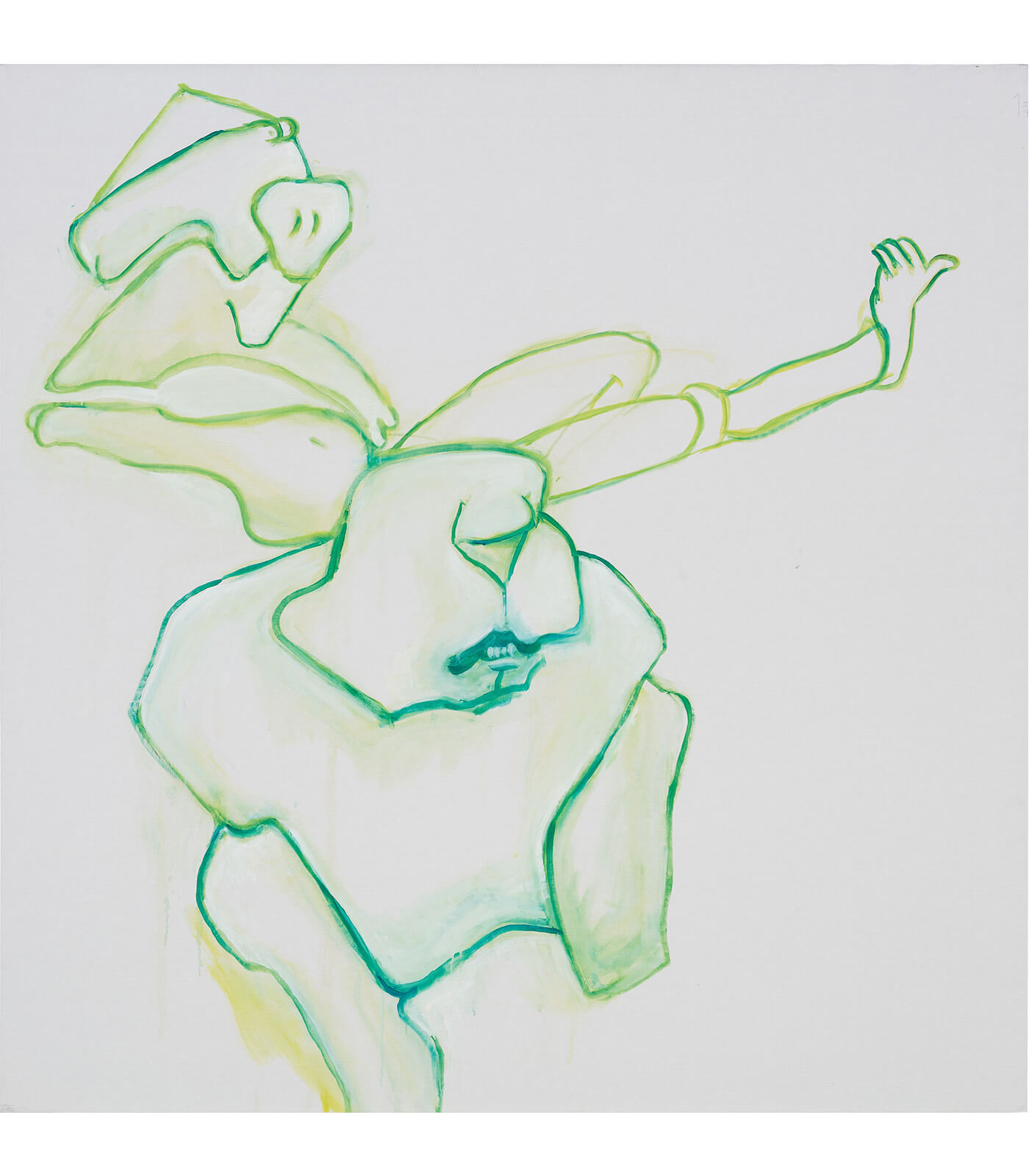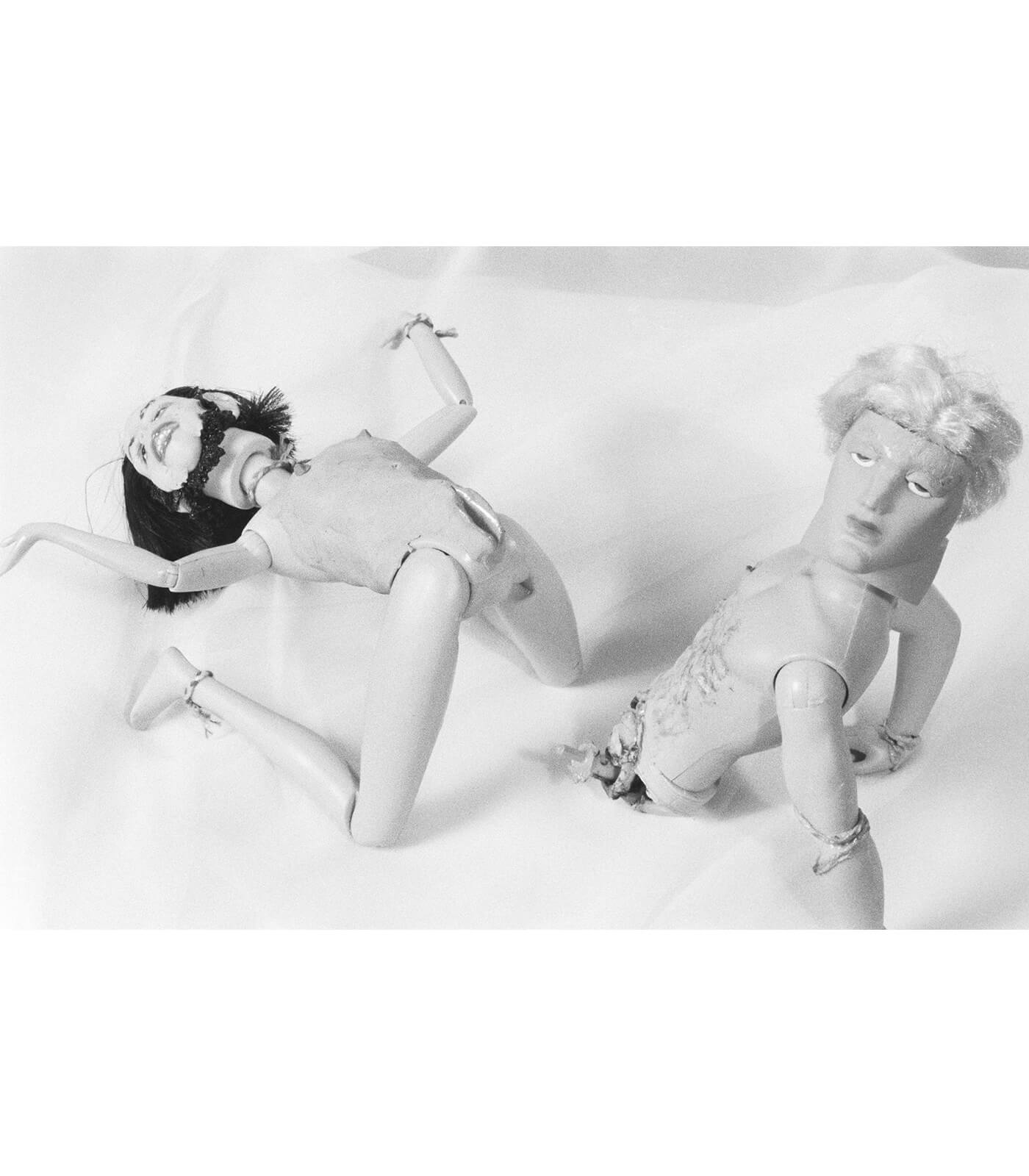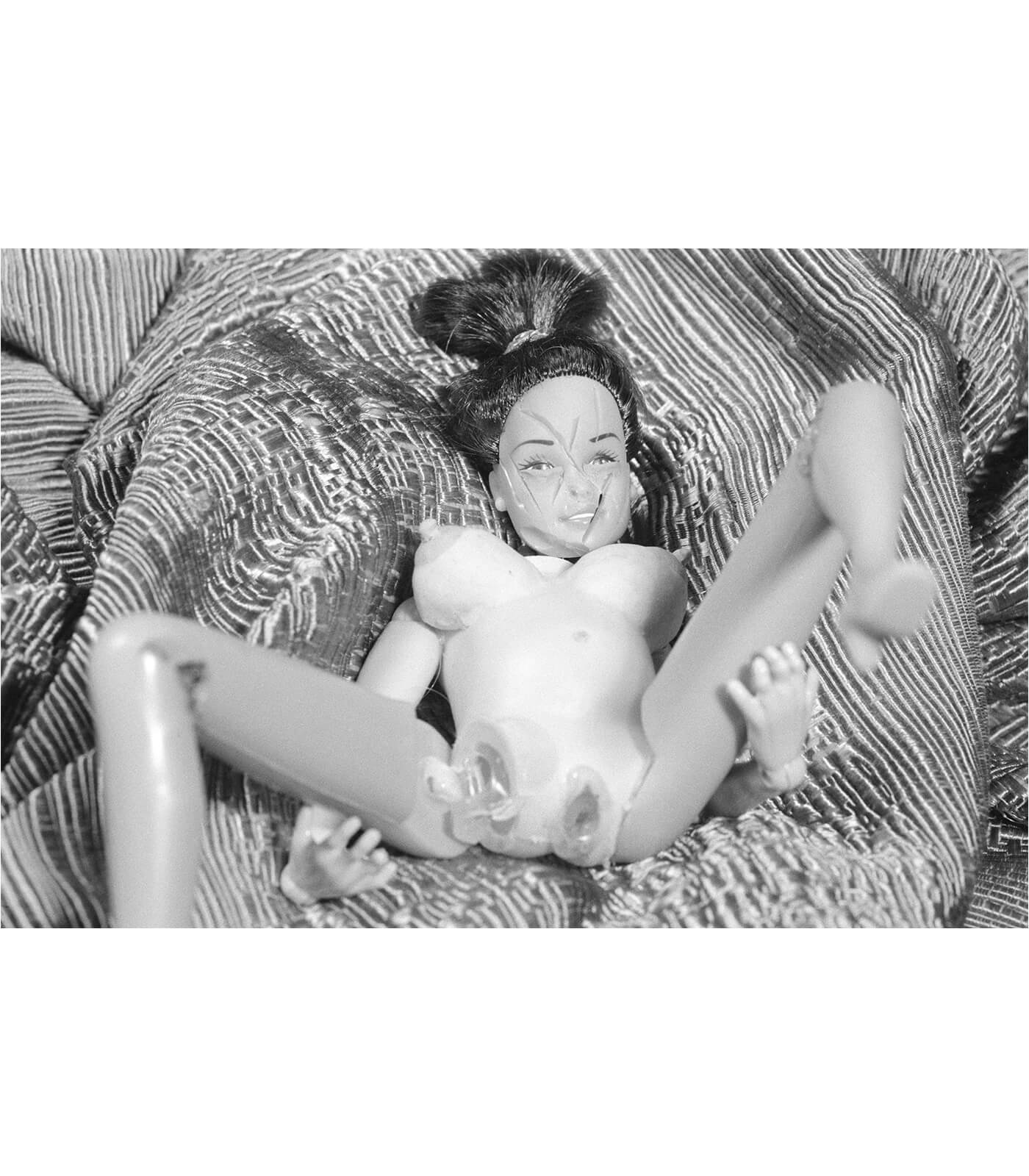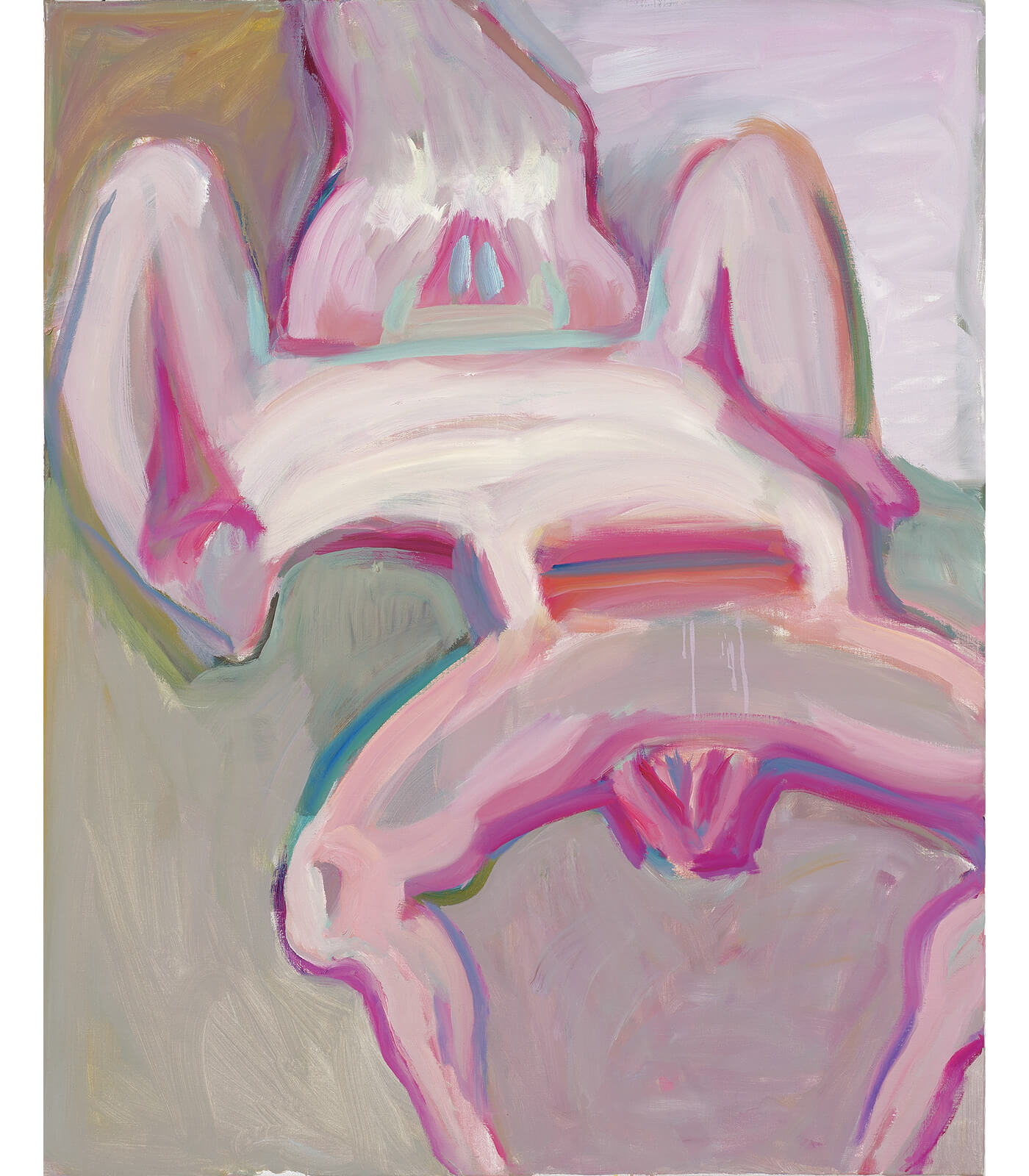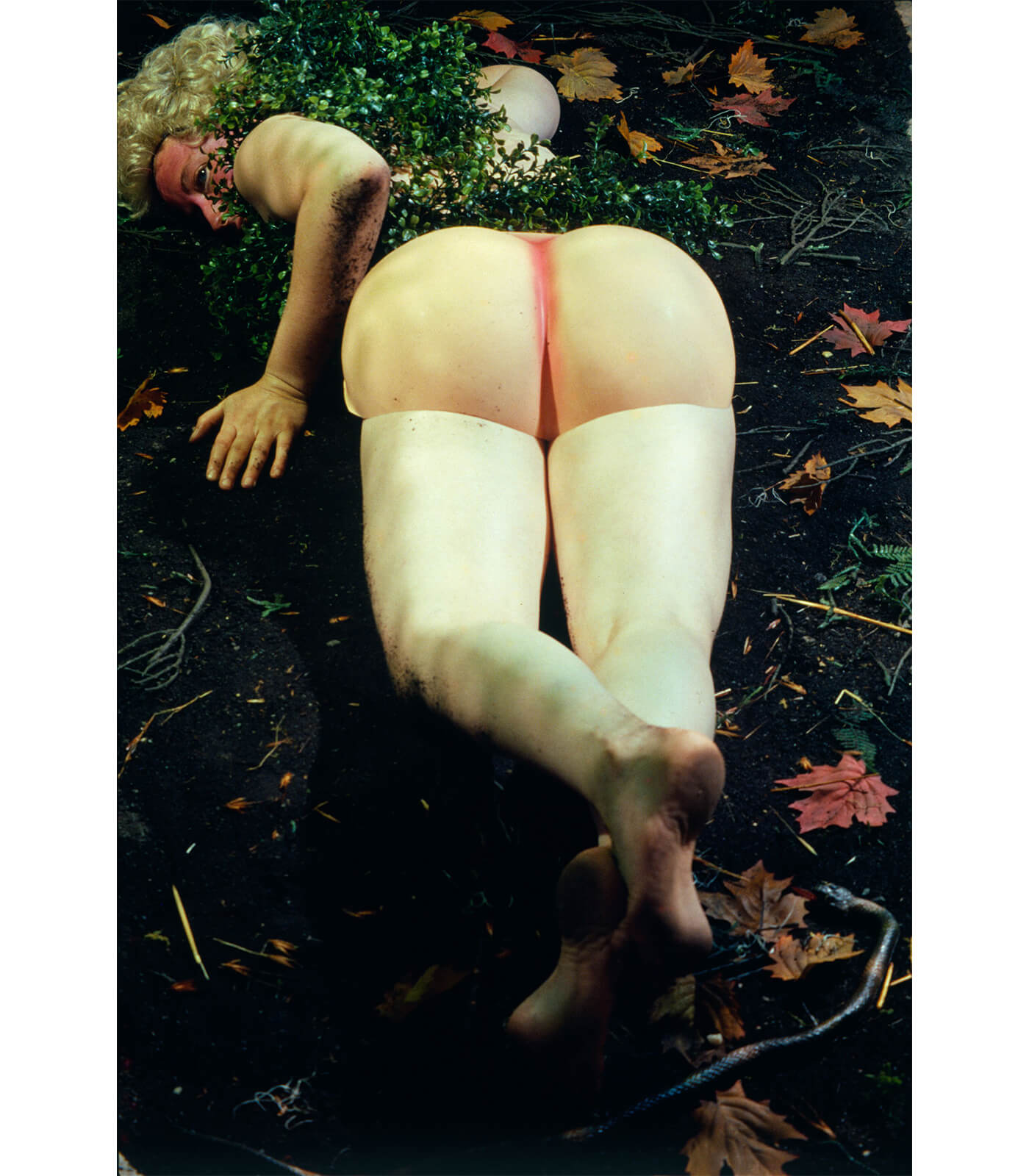
Maria Lassnig & Cindy Sherman
9 December 2021 – 5 February 2022
St. Moritz
Curated by Peter Pakesch, Chairman of the Maria Lassnig Foundation, the presentation explores the vital role that both artists, although more than a generation apart, played in the development of discussions around identity, gender, and the body in 20th and 21st century art.

Explore the exhibition
For the first time, a joint exhibition brings together the work of the renowned Austrian artist Maria Lassnig (b. 1919, Carinthia, Austria, d. 2014, Vienna, Austria) and the ground-breaking US artist Cindy Sherman (b. 1954, Glenn Ridge, New Jersey) at Hauser & Wirth St. Moritz. ‘Maria Lassnig & Cindy Sherman’ comprises paintings and an animated film created by Lassnig between 1971 – 2008 and photographic works by Sherman spanning series from her Untitled Film Stills to her History and Clown portraits. The works on view investigate both Lassnig and Sherman’s unique explorations of female identity, highlighting themes such as the mother, the body, the clown, and the couple.
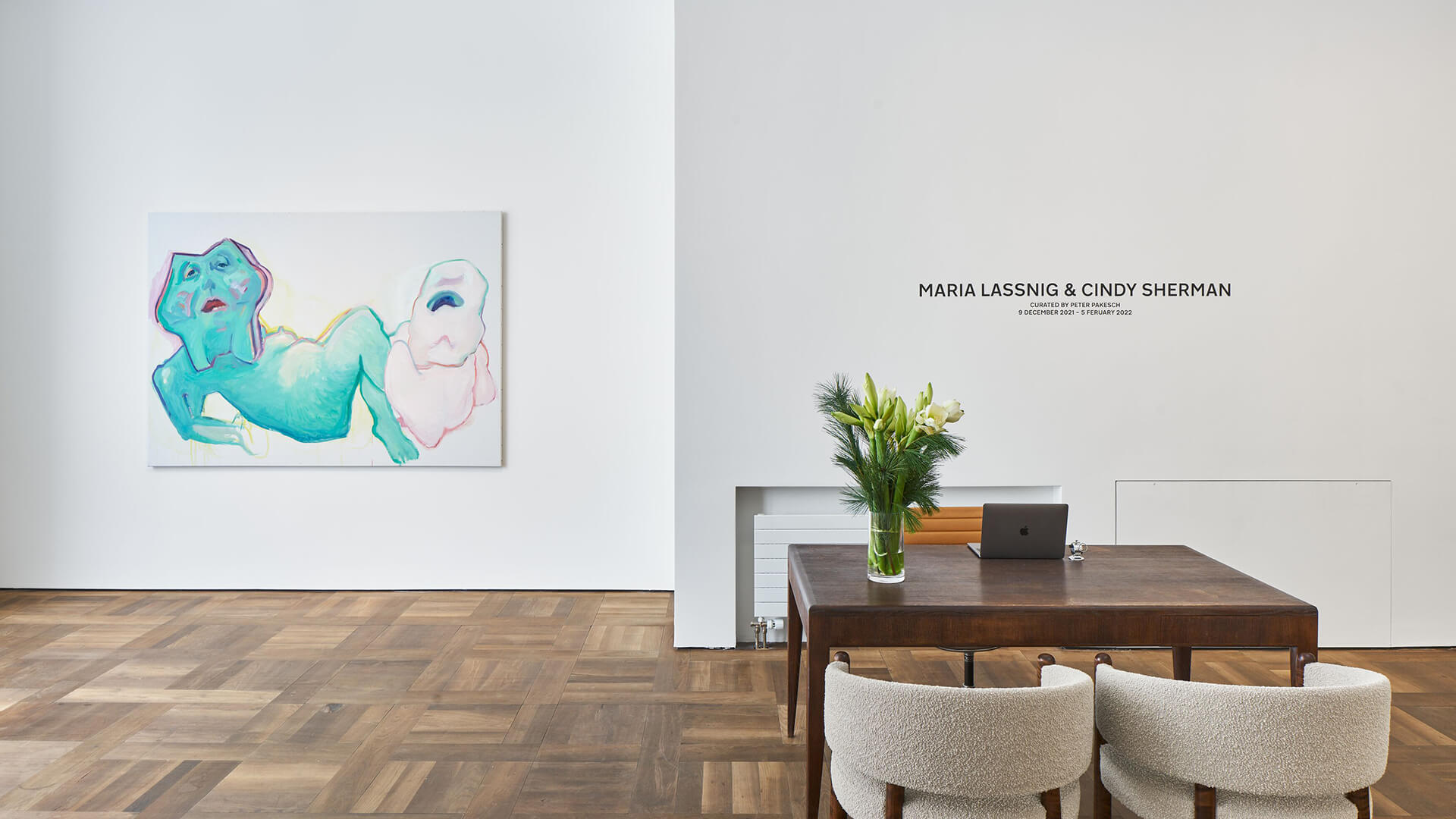
‘Maria Lassnig & Cindy Sherman’ takes as its point of departure the 1983 presentation ‘Selbstdarstellungen (Self-portrayals)’ at Berlin’s Haus am Waldsee, where the artists were exhibited in two separate shows under the same title, although they seemingly had little in common at the time. A crucial difference between the work of Lassnig and Sherman is their relationship to self-portraiture. For Lassnig, the selfportrait is central to her work; it has become an important vehicle for exploring her body and identity. For Sherman, it is almost the opposite. Her self-portrayal runs counter to the conventional understanding of the self-portrait, radically questioning and disposing of it. Sherman camouflages herself by repeatedly impersonating a myriad of stereotypical female characters within her series of photographs.
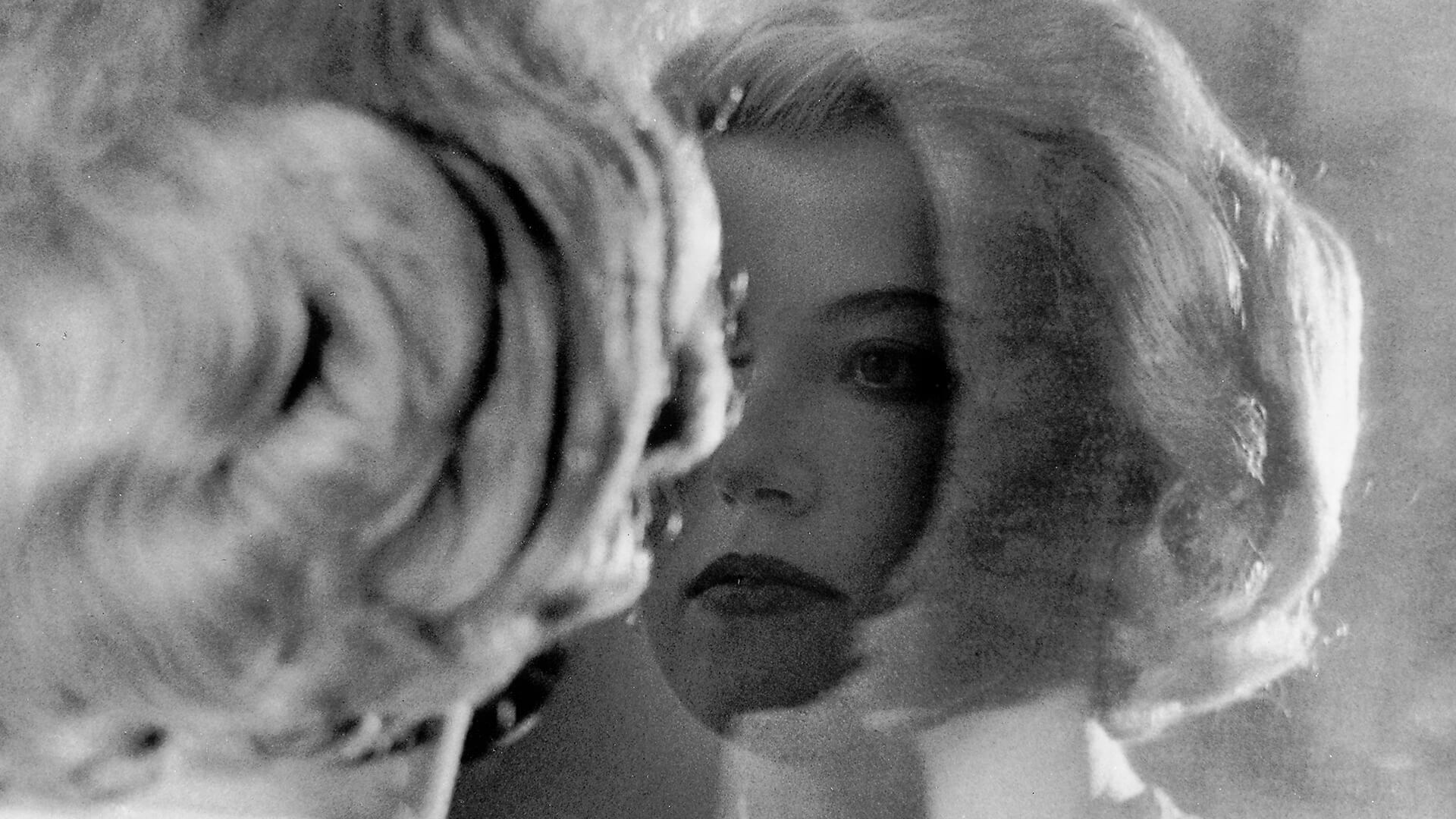
This construction of female identity is investigated in Sherman’s iconic series of Untitled Film Stills (1978), three of which are on view in St. Moritz. The artist impersonates stereotypical female caricatures inspired by Hollywood pictures, film noir, and B movies, exploring the tension between identity and artifice in consumer culture. In Lassnig’s animated film ‘Selfportrait’ (1971) made during her time in New York City, the artist features as herself, taking on a number of different roles and identities. Briefly shifting her priorities from painting during this time, motion pictures enabled Lassnig to expand and narrativise her ‘body awareness’ project and rigorous subjectivity.
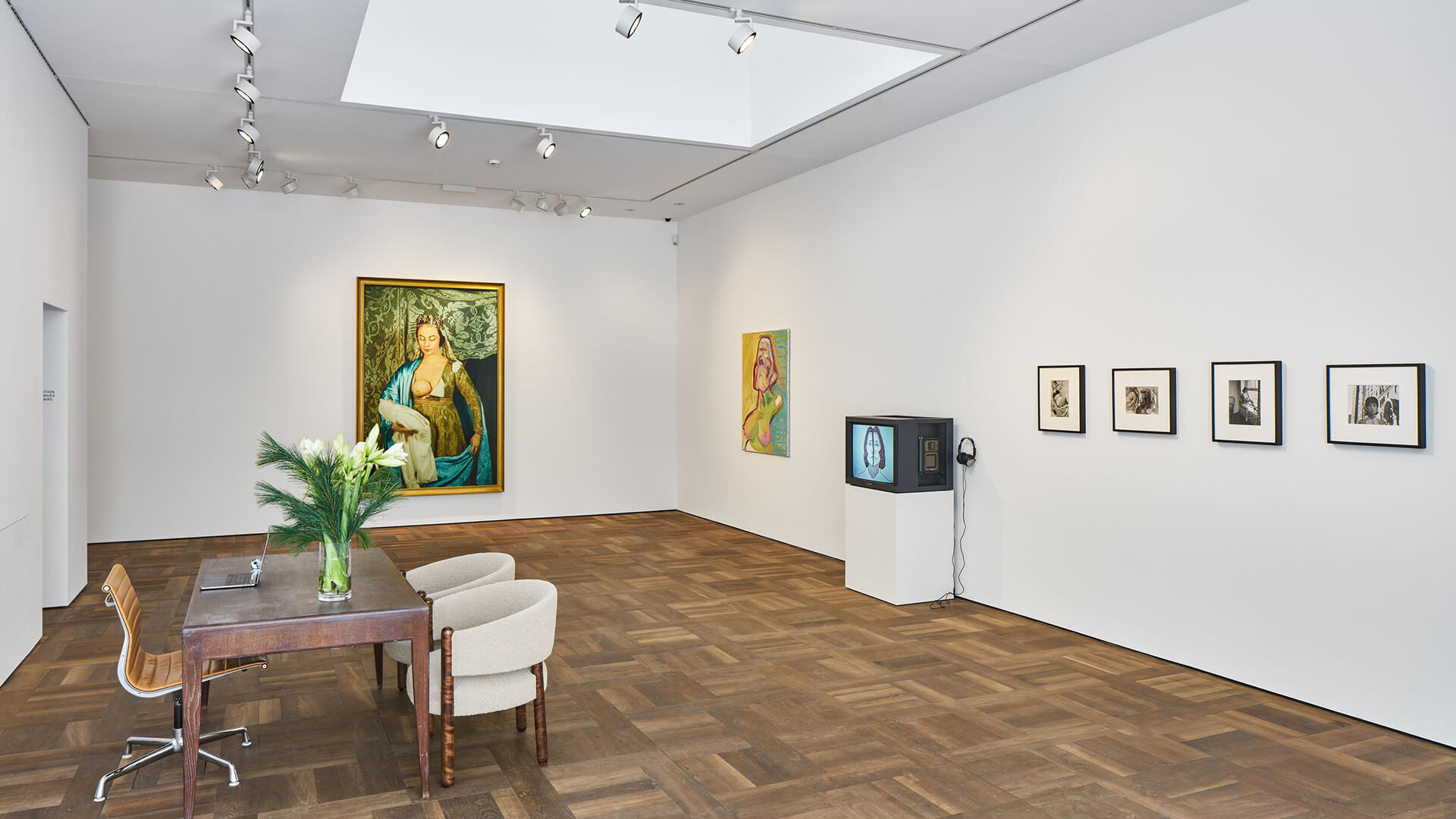
The theme of the sexualised female body is confronted in the works ‘Traum vom Idealbusen / Busenwunsch / Busenillusion (Dream of the Ideal Bosom / Bosom Wish / Bosom Illusion)’ (1996-1997) by Lassnig and Sherman’s ‘Untitled’ (1988) from her History portraits. Here, Sherman deals with the fetishized and tabooed body within a historic and cultural context, whereas Lassnig’s work is an existential examination of her own fantasies. For Sherman, her work is an amalgamation of references taken from society, in contrast to Lassnig’s internal search for authenticity. Both works share a provocative yet humorous take on the subject matter.
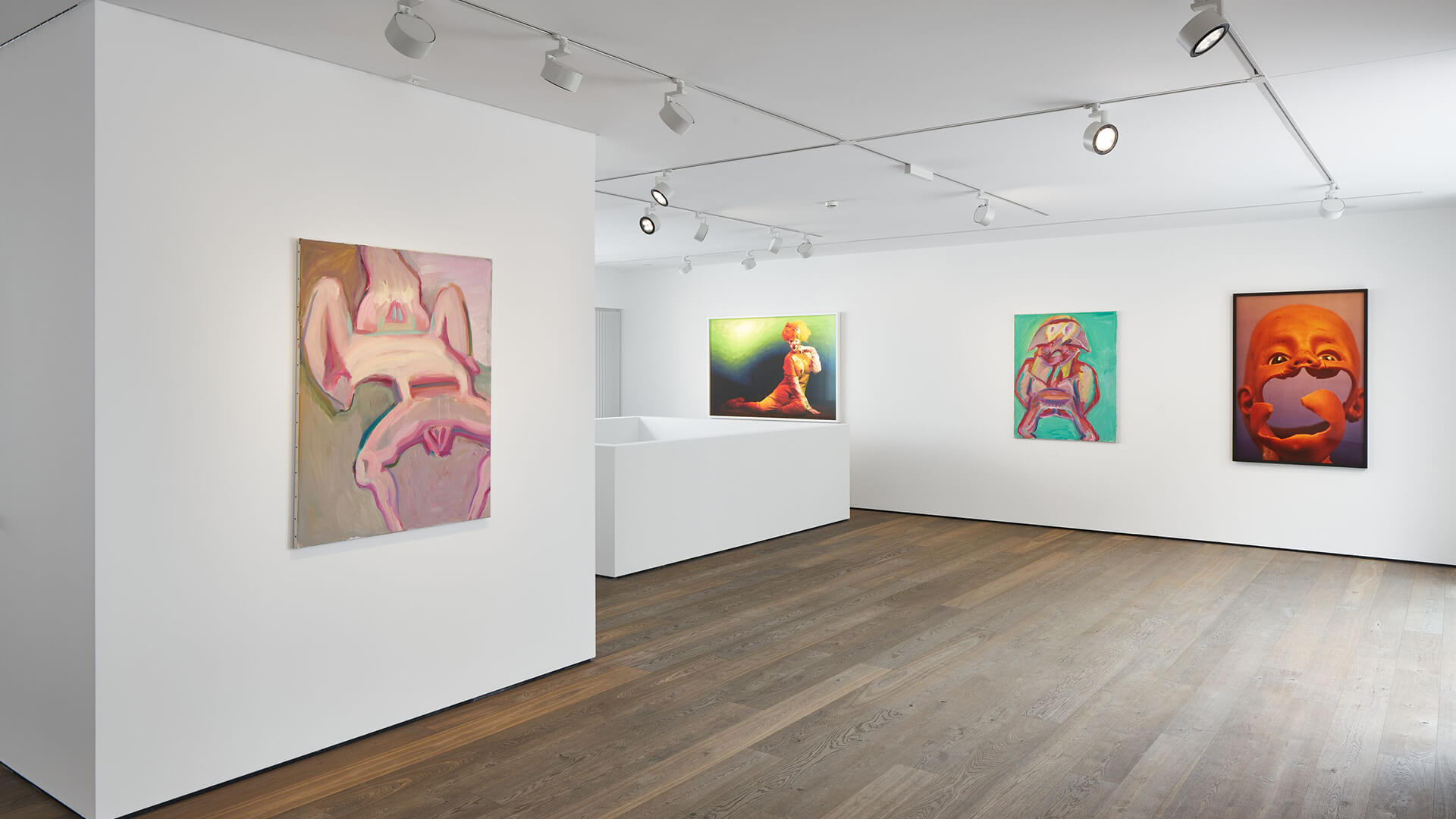
The exhibition continues on the first floor with works depicting the artists as clowns. In ‘Untitled’ (2005), Sherman poses as this character, at once playful and menacing, to explore the disparity between the exterior persona and interior psychology of her subject. Lassnig also looks at the clown’s fractured sense of self as a metaphor for her own identity through the guise of the Harlequin in her work ‘Selbst als Harlekin / Selbstportrait als Pierrot / Selbstportrait als Napoleon (Self as Harlequin / Self-Portrait as Pierrot / Self-Portrait as Napoleon)’ (1997).
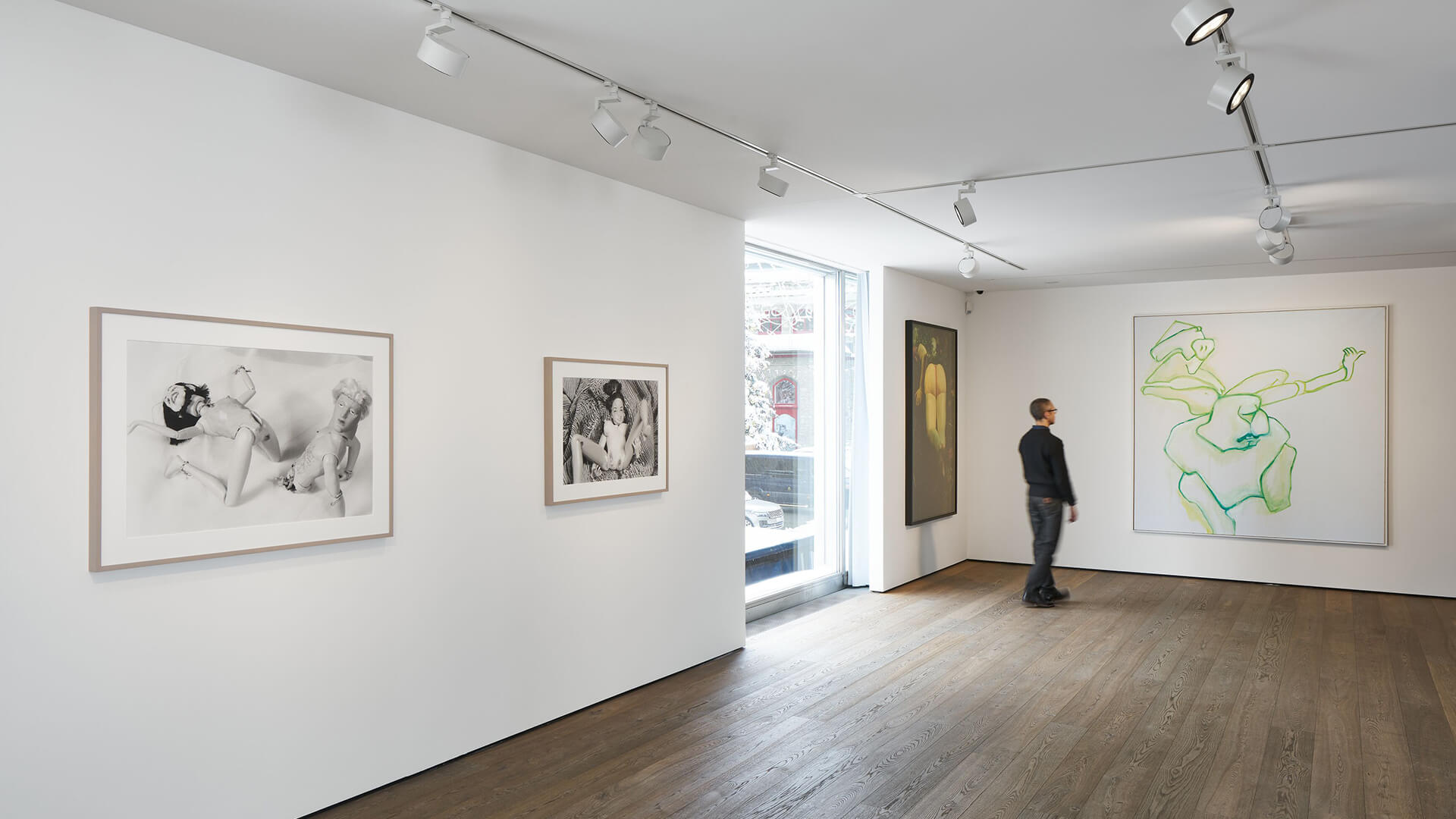
Concluding the presentation are works by both artists that explore sex and the couple. In ‘Frau und Mann (Woman and Man)’ (2007), Lassnig’s abstracted limbs of her subjects become at once intertwined and fragmented. A series of black and white photographs from 1999 featuring dismembered male and female dolls by Sherman, known as her Broken Dolls series, create abject and eerie images. Parallel to the question of identity, the artists’ questioning of the body as a fractured entity is central to their work.
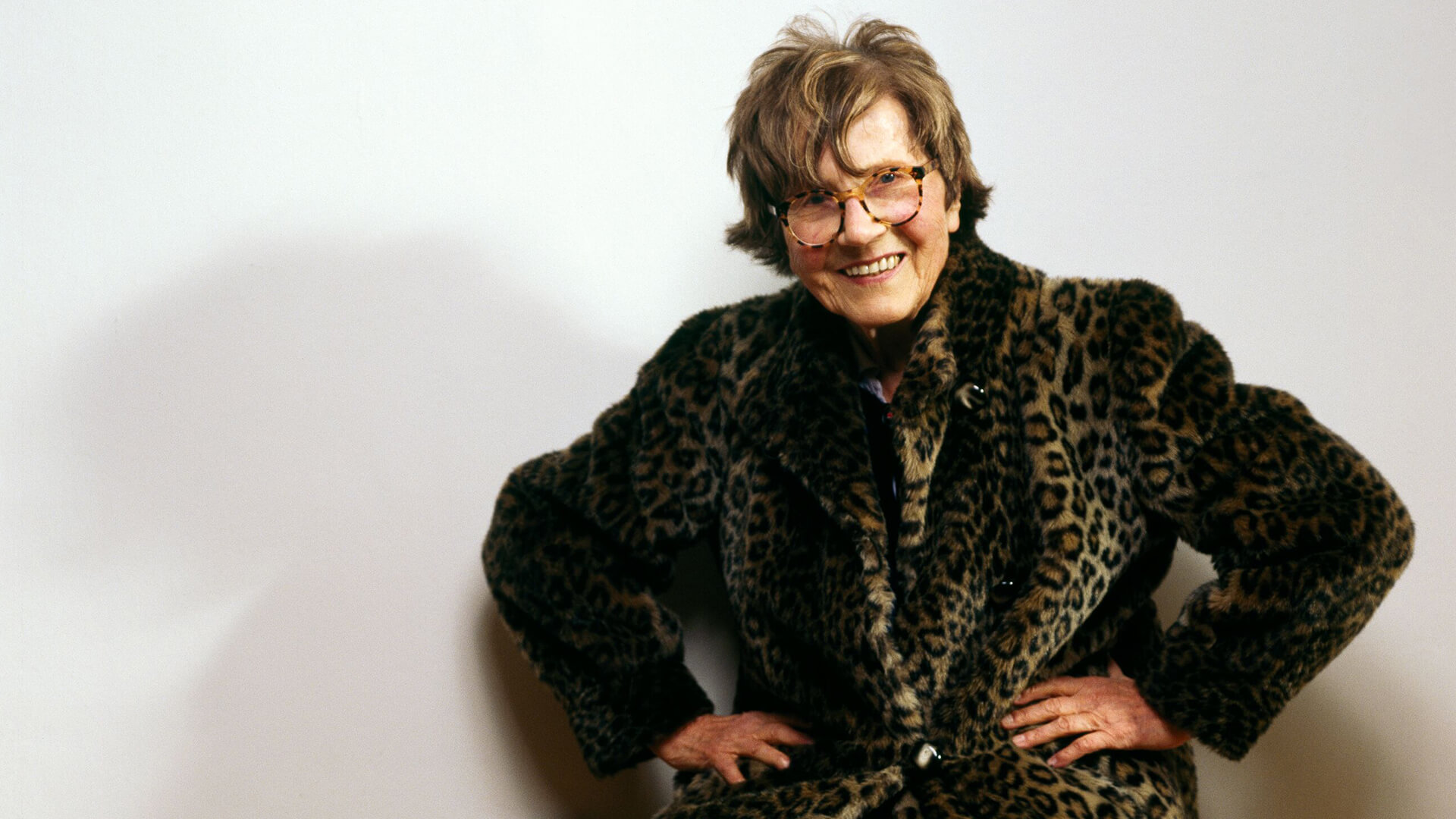
About Maria Lassnig
Born in Carinthia in Southern Austria in 1919, Maria Lassnig’s (1919 – 2014) work is based on the observation of the physical presence of the body and what she termed ‘body awareness’, or ‘Körpergefühl’ in German. She studied at the Academy of Fine Arts in Vienna in the midst of the Second World War. Then, in post-war Europe, she quickly moved away from the state-approved academic realism in which she was trained, looking to Austria’s own avant-garde past, such as the coloration of Oskar Kokoschka and Egon Schiele’s expressionist treatment of figuration.
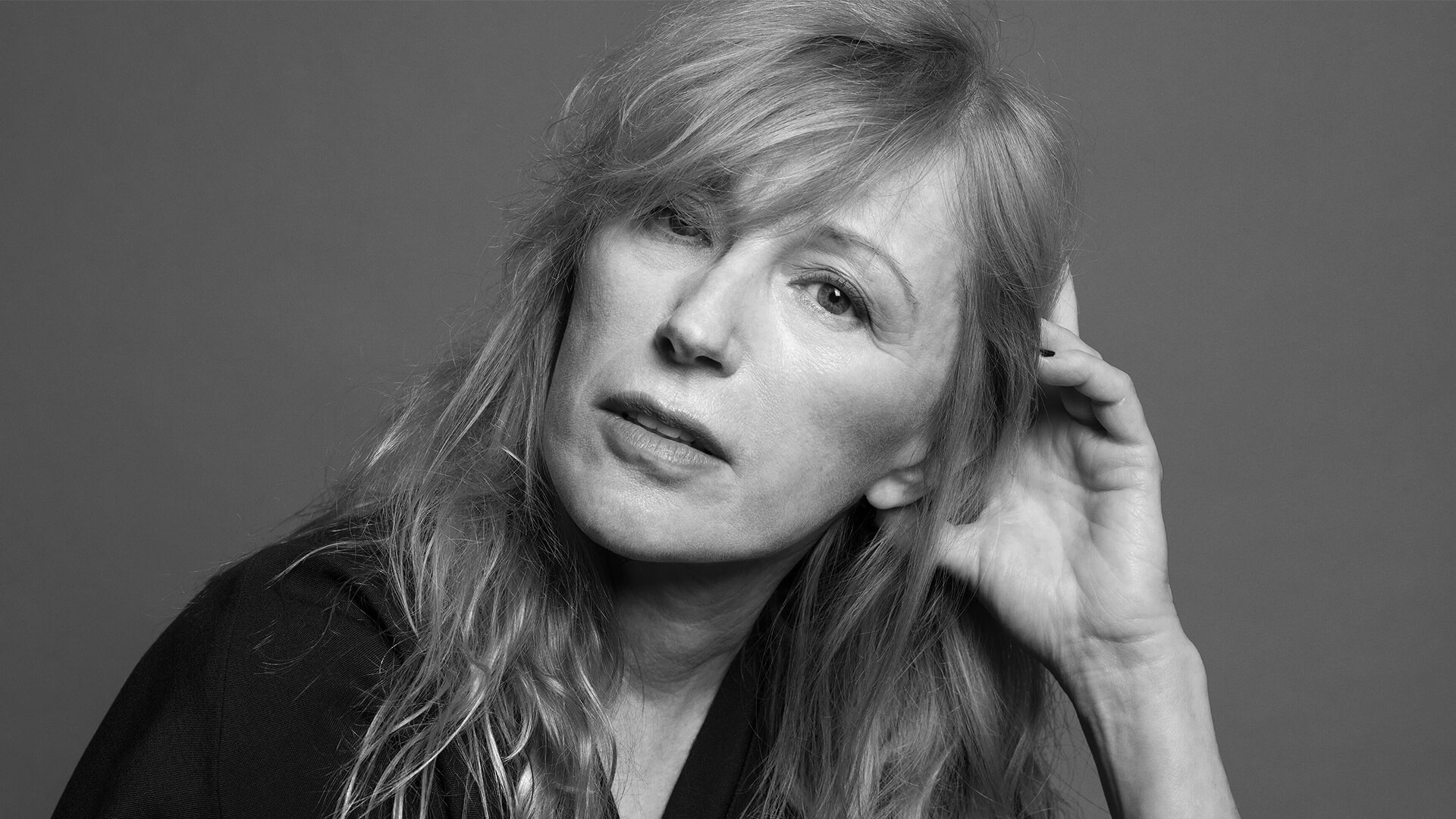
About Cindy Sherman
Born in 1954 in Glen Ridge, New Jersey, Cindy Sherman lives and works in New York NY. Her ground-breaking photographs have interrogated themes around representation and identity in contemporary media for over four decades. Coming to prominence in the late 1970s with the Pictures Generation group alongside artists such as Sherrie Levine, Richard Prince and Louise Lawler, Sherman studied art at Buffalo State College in 1972 where she turned her attention to photography.
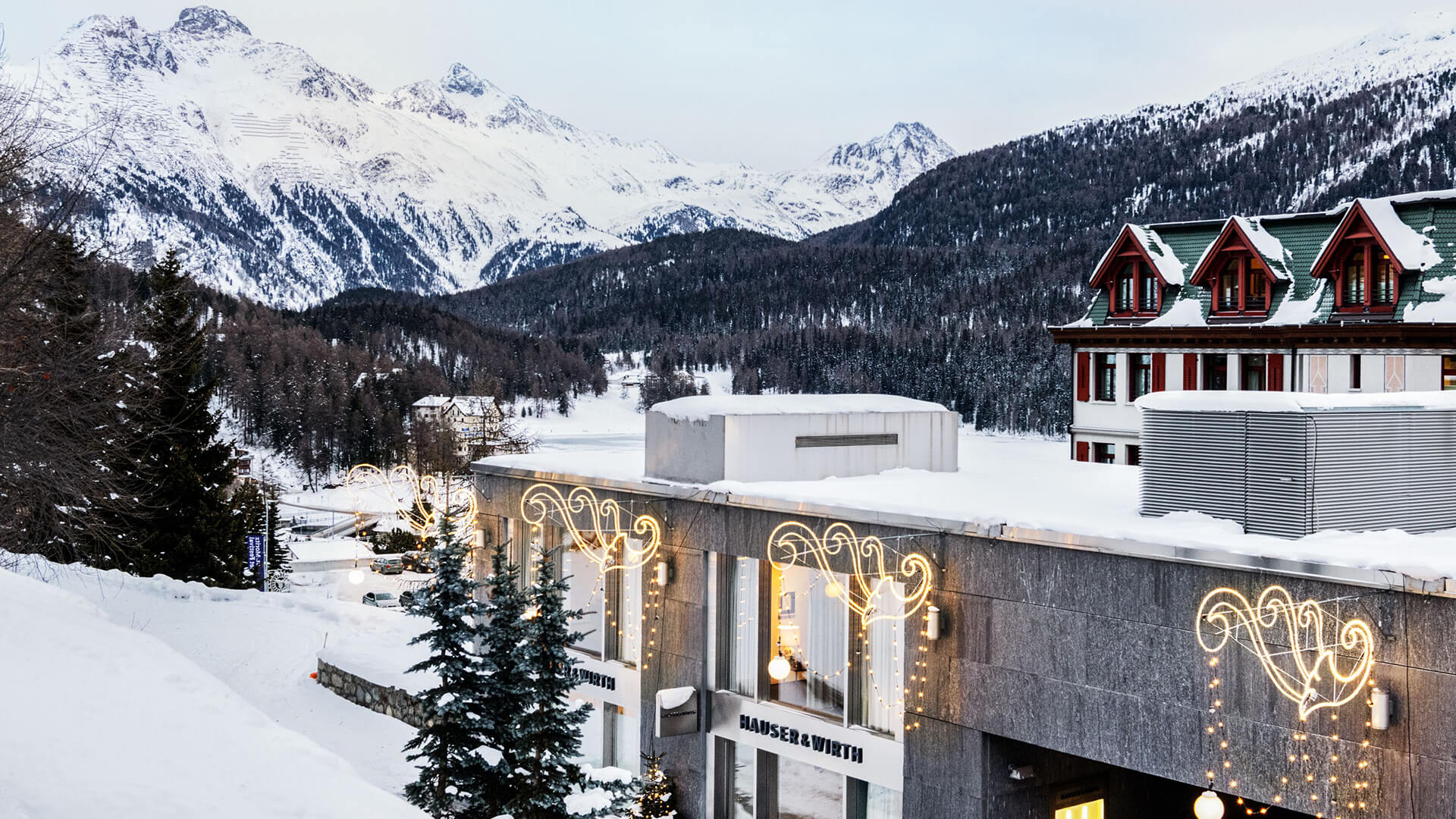
On view in St. Moritz
The gallery is open to the public Tuesday to Saturday, 11 am to 7 pm. Please visit our location for Holiday opening hours.
About the Artists
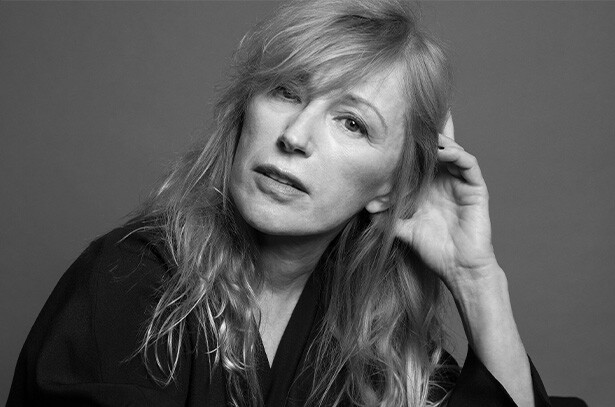
Cindy Sherman
Cindy Sherman was born in 1954 in Glen Ridge, New Jersey; she lives and works in New York. Her ground-breaking photographs have interrogated themes around representation and identity in contemporary media for over four decades. Sherman first turned her attention to photography at Buffalo State College, where she studied art in the early 1970s, and came to prominence in the late 1970s with the Pictures Generation group.
Utilising prosthetics, theatrical effects, photographic techniques and digital technologies, she has channeled and reconstructed familiar personas known to the collective psyche, often in unsettling ways, and has explored the more grotesque aspects of humanity through the lens of horror and the abject. Her later series have also touched on issues from class to aging.
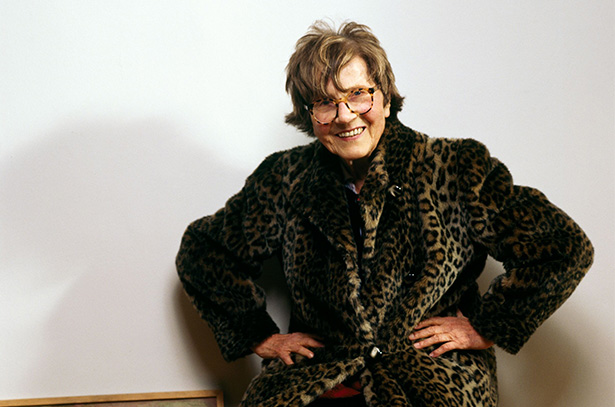
Maria Lassnig
Born in Carinthia in Southern Austria in 1919, Maria Lassnig’s (1919 – 2014) work is based on the observation of the physical presence of the body and what she termed ‘body awareness’, or ‘Körpergefühl’ in German. She studied at the Academy of Fine Arts in Vienna in the midst of the Second World War. Then, in post-war Europe, she quickly moved away from the state-approved academic realism in which she was trained, looking to Austria’s own avant-garde past, such as the coloration of Oskar Kokoschka and Egon Schiele’s expressionist treatment of figuration.
Her early years were marked by experiences with various ‘isms’, including artistic currents in surrealism and automatism from the late 1940s, followed by ‘art informel’ and post-cubism in the 1950s. After moving to Paris in 1960, an innovative figuration, expressive and painterly, was beginning to emerge. In the next few years, she developed narrative paintings with one or more figures, at times borrowing from technoid forms of science fiction set in absurdly caricatured scenes. Animal-like, monstrous self-portraits emerged alongside this group of works.
In 1968, Lassnig moved to New York where her artistic work once again switched direction—she turned to external realism and painted portraits, nudes and still lifes, at times combining these with her ‘body awareness’ self-portraits. Many of her paintings, drawings and watercolors were devoted to recording her physiological states through a direct and unflinching style. Utilizing contrasting colors such as greens, pinks and blues, as well as strong body shapes to give her paintings a powerful, even drastic impact, Lassnig looked to herself, a female artist in a predominantly male world, as her primary subject.
Of her artistic process, Lassnig has said: ‘I step in front of the canvas naked, as it were. I have no set purpose, plan, model or photography. I let things happen. But I do have a starting-point, which has come from my realization that the only true reality are my feelings, played out within the confines of my body. They are physiological sensations: a feeling of pressure when I sit or lie down, feelings of tension and senses of spatial extent. These things are quite hard to depict.’ Her famed portraits and self-portraits are often treated with a playful irony, even in her depictions of the aging body and psychological turmoil.
In 1980, Lassnig was awarded a professorship—with a focus on painting and animation film—at the University of Applied Arts in Vienna. As a result, her self-portraits repeatedly explored issues of overload and enforced estrangement. She then began dealing more extensively with mythological contents, with nature and ‘rural life,’ and continued her exploration of figure-ground tensions. From the late 1990s, Lassnig turned to the great existential themes with her so-called Drastic Pictures, such as the relationship between the sexes and generations, unchosen lifestyles, as well as oppression, destruction, impermanence, and death.
Portrait: Maria Lassnig in her studio, Vienna, 2007 © Monopol/Elfie Semotan 2007
Inquire about available works by Maria Lassnig & Cindy Sherman
‘Maria Lassnig & Cindy Sherman’ comprises paintings and an animated film created by Lassnig between 1971 – 2008 and photographic works by Sherman spanning series from her Untitled Film Stills to her History and Clown portraits. The works on view investigate both Lassnig and Sherman’s unique explorations of female identity, highlighting themes such as the mother, the body, the clown, and the couple.
–
‘Maria Lassnig & Cindy Sherman’ is on view now through 5 February 2021 at Hauser & Wirth St. Moritz.
Current Exhibitions
1 / 11
